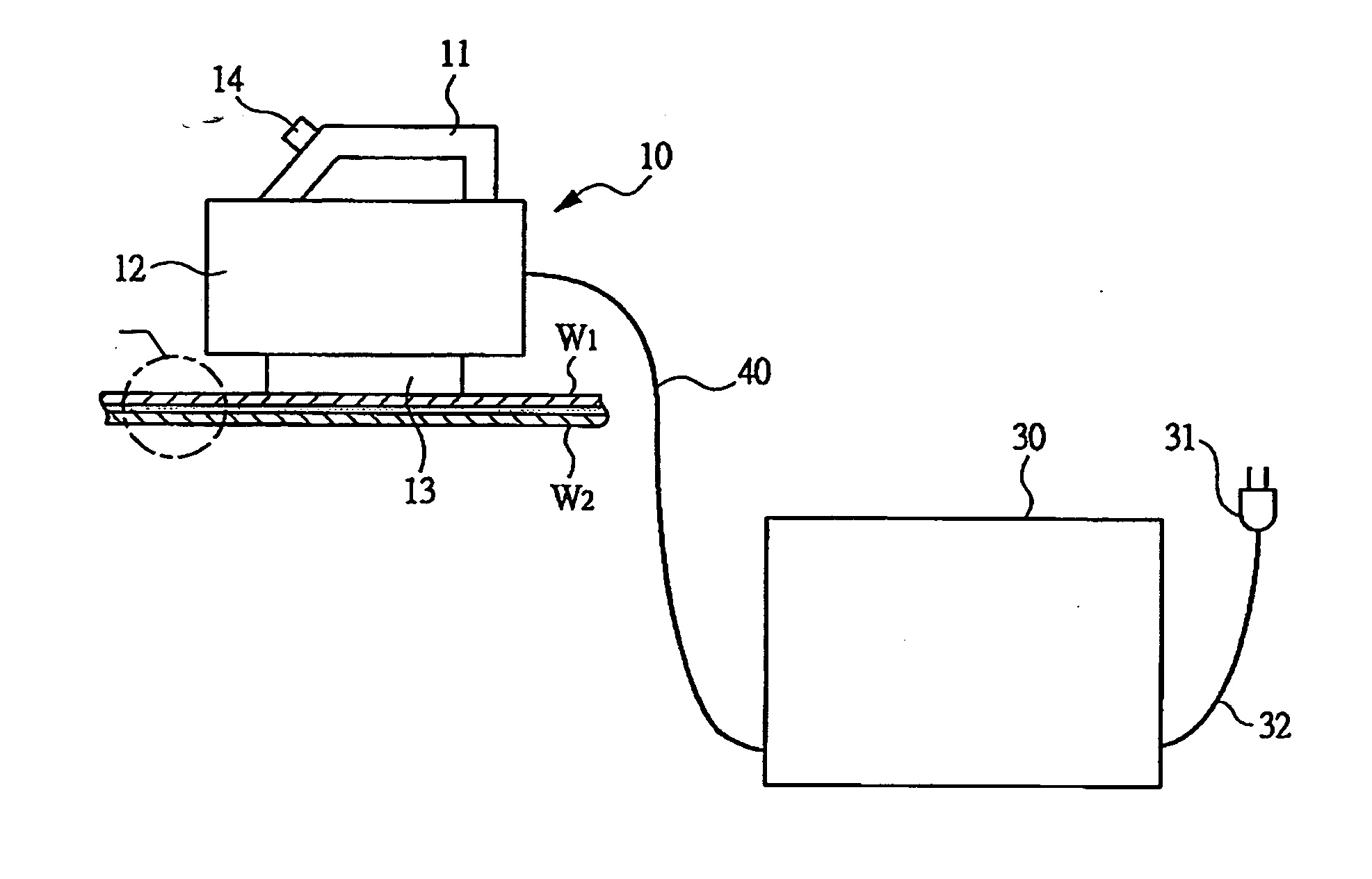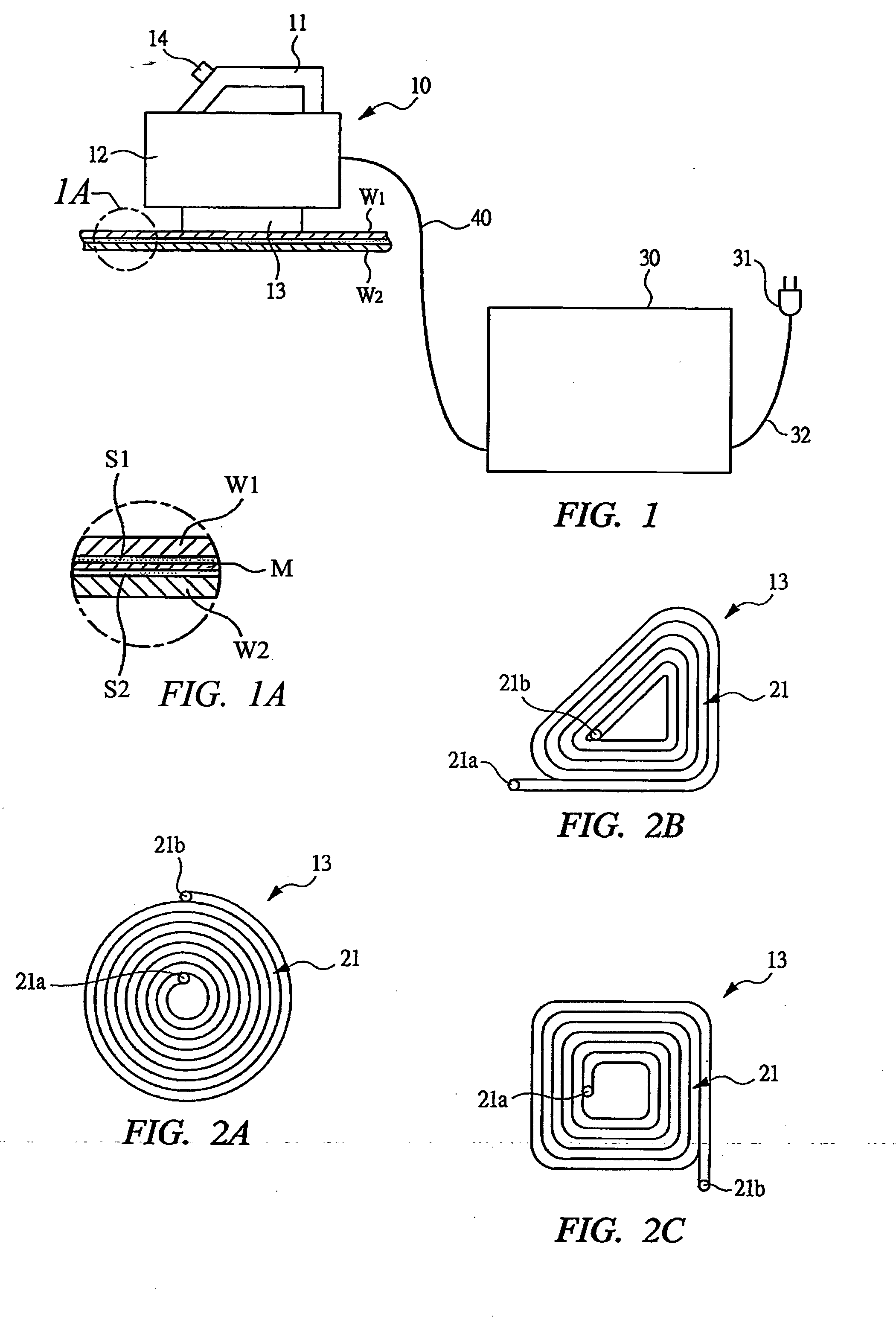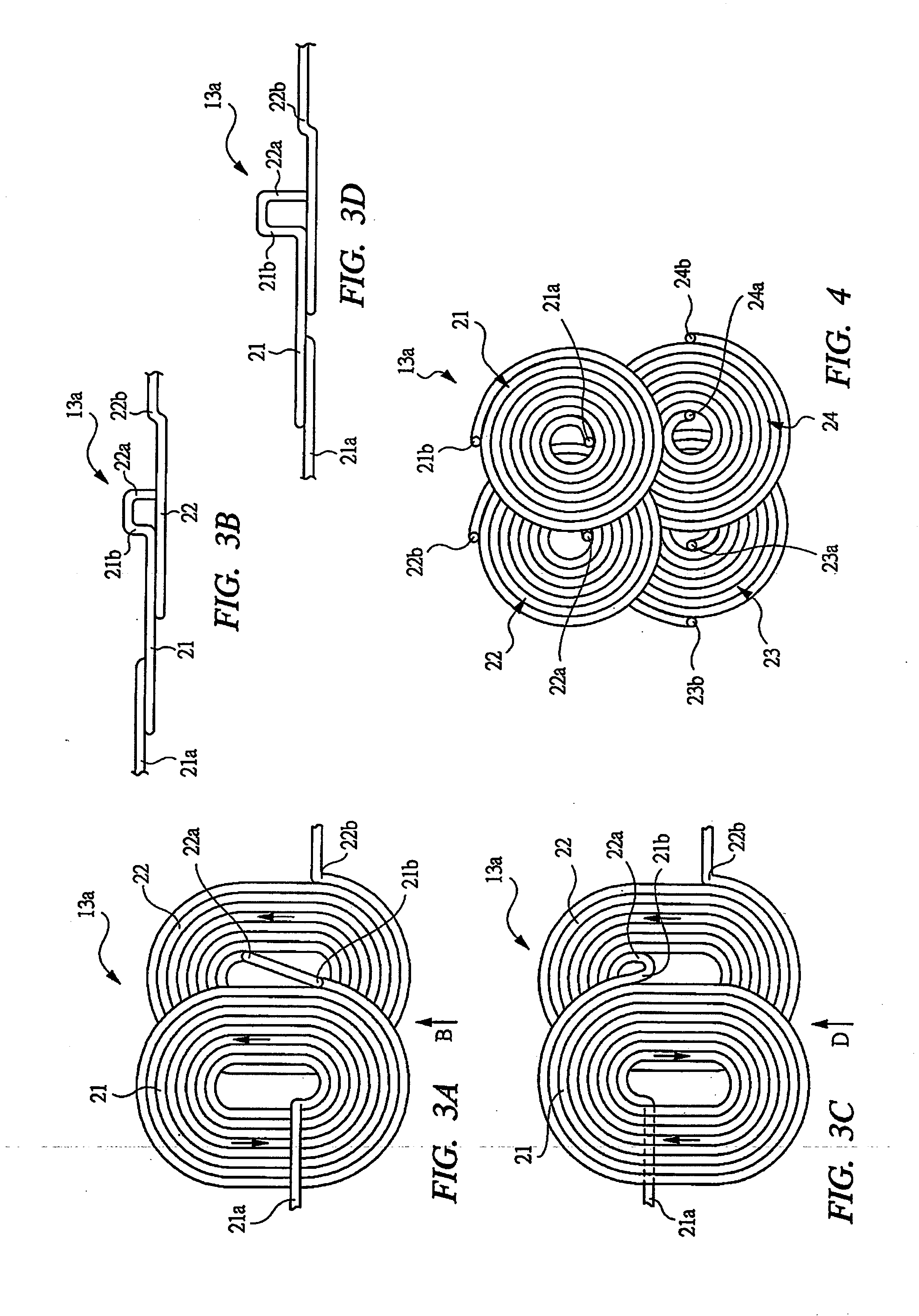Portable electromagnetic induction heating device
a heating device and electromagnetic technology, applied in the direction of induction current sources, electric/magnetic/electromagnetic heating, manufacturing tools, etc., can solve the problems of generating further noise, heating metal sheets by using conventional coils, and taking time to cure until the adhesive solidifies, so as to improve the efficiency of generating eddy current and reliable heating
- Summary
- Abstract
- Description
- Claims
- Application Information
AI Technical Summary
Benefits of technology
Problems solved by technology
Method used
Image
Examples
Embodiment Construction
[0043] In FIGS. 1 and 1A, a state in which two members W1 and W2 are bonded by thermoplastic adhesive is shown, and a conductive sheet M comprising metal foil to whose both surfaces adhesive S1 and S2 are applied is disposed between the two members W1 and W2. The sheet M is made of aluminum or steel. The sheet M comprising the metal foil which is a conductor, i.e., a conductive member is made to generate heat by an electromagnetic induction effect, and the adhesive S1 and S2 are heated by the heat to melt the adhesive in a short time in seconds, whereby the members W1 and W2 can be mutually bonded. If the metal foil is similarly made to generate heat by a portable electromagnetic induction heating device to melt the adhesive, the members W1 and W2 bonded by the adhesive can be peeled off from each other. By using the portable electromagnetic induction heating device shown in FIG. 1 in the above described manner, for example, when the respective members W1 and W2 are wood or plaster ...
PUM
| Property | Measurement | Unit |
|---|---|---|
| frequency | aaaaa | aaaaa |
| inductance | aaaaa | aaaaa |
| magnetic force | aaaaa | aaaaa |
Abstract
Description
Claims
Application Information
 Login to View More
Login to View More - R&D
- Intellectual Property
- Life Sciences
- Materials
- Tech Scout
- Unparalleled Data Quality
- Higher Quality Content
- 60% Fewer Hallucinations
Browse by: Latest US Patents, China's latest patents, Technical Efficacy Thesaurus, Application Domain, Technology Topic, Popular Technical Reports.
© 2025 PatSnap. All rights reserved.Legal|Privacy policy|Modern Slavery Act Transparency Statement|Sitemap|About US| Contact US: help@patsnap.com



